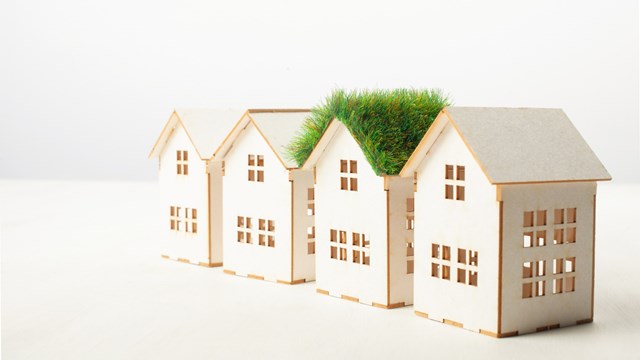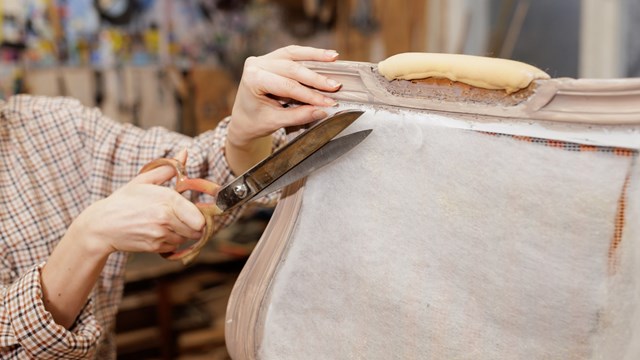
New York City is home to some of the most spectacular living spaces in the world. At the end of the day however, even the most luxurious, most exclusive co-op and condo buildings are simply places to live. Yes, they may have stunning architecture and amazingly beautiful hallways and lobby spaces, but for all the opulence and finery, these spaces are mostly for people to move through on their way somewhere else. They are not necessarily decorated or intended to be lingering places.
With a growing number of buildings, however, that’s becoming less and less the case. Some buildings in the city have made it a point to acquire—and display—significant collections of art in their lobbies and common spaces. Paintings, drawings, sculptures, installations, and other media are used both as an enticement to prospective buyers, and to increase the value of shareholders’ and owners’ investment.
Why Art?
Why would a building be interested in investing in an art collection? According to Tino Grana, of Manhattan-based decorating firm Art ASAP, the value of art in residential buildings greatly increases the aesthetics of the common spaces, as well as offering a potential resale profit for the investment.
“It gives the building a more prestigious cache,” Grana says. “Tenants and shareholders want to show off when they bring guests over.”
Investing in art collections is not yet a common practice, but it is a growing trend—especially among the newer residential buildings in New York City, says Grana. “I’m seeing it more and more. It’s the competitive nature of the business. People want their buildings to look nicer. You’ll see more collections going up in newer buildings because the competition is not as fierce in older buildings, and they are more set in their ways.”
The Art of Art Acquisition
Buildings seeking to amass an art collection don’t have to spend a great deal of money on acquisitions. You can find works of value in many budgets. Dawn Gideon, an independent art dealer based in Manhattan, advises getting a professional’s advice before investing in art. “You have to be careful,” she says. “You can spend a great deal on a frame and the art inside might not be worth the cost of the frame. It becomes furniture.”
Generally speaking, a new building’s developer will hire an interior designer or design team and will seek out artwork via their recommendation, or that of a consultant.
That doesn’t mean that shareholders and tenants do not have a say, however. “If a board wishes to be directly involved, they can browse the many galleries in the city,” says Marsha Vander Heyden, of Manhattan-based Tapestries, Etc. Although time-consuming, this approach can address the many and often widely varying tastes of the people involved in the selection process.
In a lobby, you are dealing with a design team, so you have to incorporate their design ideas. The style, the color, and tone of the art must match the overall environment. “When it comes to shareholders, it’s all done by committee,” says Grana. “Because in the end, they allocate budgets for acquisitions.”
Art at Home
Once pieces are purchased, they are often displayed in the most visible parts of the building—namely the lobby and hallways. Often, buildings will put more prestigious, more expensive pieces in the lobby and put works that—while originals, and possibly quite valuable—are not as well known as the others, in a less trafficked part building.
And what about the care, maintenance, and insurance of an art collection in a residential building? The day-to-day conditions in a working residential building are quite different than those of a museum or art gallery.
Vander Heyden points out that special care is needed for art. “Anything placed in the bright sun is going to become faded over time,” she warns. “Tapestries, for example, need to be dusted, vacuumed, and even dry cleaned, although not very often—every five to 10 years or so.”
Grana agrees. “Pieces are museum mounted, and once they’re installed, it’s basically about cleaning the frame and the glass.” Care must be taken so that the artwork is not bumped or dropped or damaged by the regular traffic or cleaning, however, which leads to insurance ramifications.
“If the pieces are of value they should be insured, of course,” says Vander Heyden. “At least by a general liability policy.”
In addition to making their buildings more aesthetically attractive and conferring prestige, art provides a vehicle for investment. According to Grana, most of the pieces acquired by buildings are never sold. “They are kept and re-framed, or put somewhere else,” he says. “ They are usually not bought for profit—they’re bought for aesthetic value.”
Vander Heyden adds that, “Not all co-ops are able to invest in quality art. It’s usually the upper end co-ops that can afford it.” That said, Vander Heyden stresses that investment-quality art should not be overlooked. “Over time, the art becomes a capital investment.”
A carefully made purchase can dramatically alter the value of a property. “I have seen works of art in buildings that were more valuable than the buildings themselves,” says Gideon.
Where to Start?
What kind of art is a good investment for a residential building? A good place to start is with prints. “There are different kinds of prints which are works on paper made on a press, and by means of other processes. Some incorporate alternate support materials. A reproduction poster is a print, including those which are valued collectibles. Limited edition fine art prints or unique one-off works, can be lithographs, silkscreens, etchings, wood or linoleum block prints, amongst others. Increasingly popular digital techniques, have also joined the ranks," says Gideon. "Picasso prints can sell for $500,000, and Warhol prints are enormously expensive. Centuries' worth of varied works, including photography, provide a great multitude of choice and price points. With proper guidance, this can be a good starting category."
Of course, individual buildings have different personalities based on their populations. One building may have an overall interest in ancient artifacts, while another wants a display of original baseball cards and sports paraphernalia. There are many options to choose from, including sculpture, paintings, multimedia displays, and rare drawings, just to name a few.
Choosing the pieces in the collection is the most important part. Good places to start include consultants and periodicals. The more people you have making the decision, the wider the gap will be between tastes. Taking the time to investigate the purchase may mean the difference between a piece that takes up wall space and spikes the value of the entire building. Choose carefully, and personally. Gideon offers this piece of advice: “Art is never a waste of money if you like it and it complements the space.”
Why Now?
Why the interest in art? There are several reasons why people are becoming more interested in art and collecting. After the Industrial Age, which produced things in mass quantity, there was a general trend toward items that were handmade, that had a degree of the unique to them. As the trend toward high volume and mass production continued, people began to prize handmade items.
In the early 1900s, unique items were sought after at a premium. Tiffany’s centered their focus on individual items that fetched high sale prices.
The trend continued through the 20th century—though largely in Europe—while in America there came a new focus on the industrial days. People began moving in to row houses in suburbs, and modern “progress” trumped antique or vintage in the cultural conversation. Now, with the all-encompassing presence of mass marketing and non-stop advertising, the trend seems to be shifting back to things that are unique.
Another major factor is the Internet. Many people spend all day looking at images online, and the value of symbols is becoming more and more important. Complex symbols that we used to only find in art are now part of our more general commerce and communication.
After 9/11, Americans experienced a shift in consciousness, as well. There was—and continues to be—a general willingness to live for today, to spend money to improve the quality of life, as opposed to saving everything for a rainy day. Art did not suffer in the recession that followed 9/11, according to Gideon. Americans did not live this way, largely, before the tragedy occurred.
“You see the same thing in hotels,” says Gideon. It is not just a residential trend. With a better economy, there is more money to spend. The Delano hotel in Miami was renovated in a largely artistic vein, and hotels in New York are following the trend. The Hudson Hotel, the various Ws, and many others are using artistic design to attract customers who are now appreciating the value of art and art in design.
The trend, in fact, has spread to stores and corporations. Celebrity endorsements employed by K-Mart have given way to Target’s use of well-known designers like Isaac Mizrahi and Philippe Starck to actually design the collections. “Batches” and “limited editions” are prized, and even the designation will excite buyers into a purchase.
The drawbacks to an art collection are few. There will be an additional expense for security measures and cleaning, but the benefits of increased aesthetic and financial value of the space seem to make it an option worth considering.
As people want to increase the value of their personal environments and images, the emphasis on art and design follows in a natural progression. The desire to improve living spaces extends to lobby now, just the entrance to the apartment, or the hallway to the elevator. Higher end buildings are recognizing the trend and hopping on it.
Developers are using the new trend with great success. “Buildings on the Hudson Waterfront have gone out of their way to bring in designers to advise them about art collections,” says Grana. “It has proven very successful.”
Denton Tarver is a freelance writer and a frequent contributor to The Cooperator.






Leave a Comment